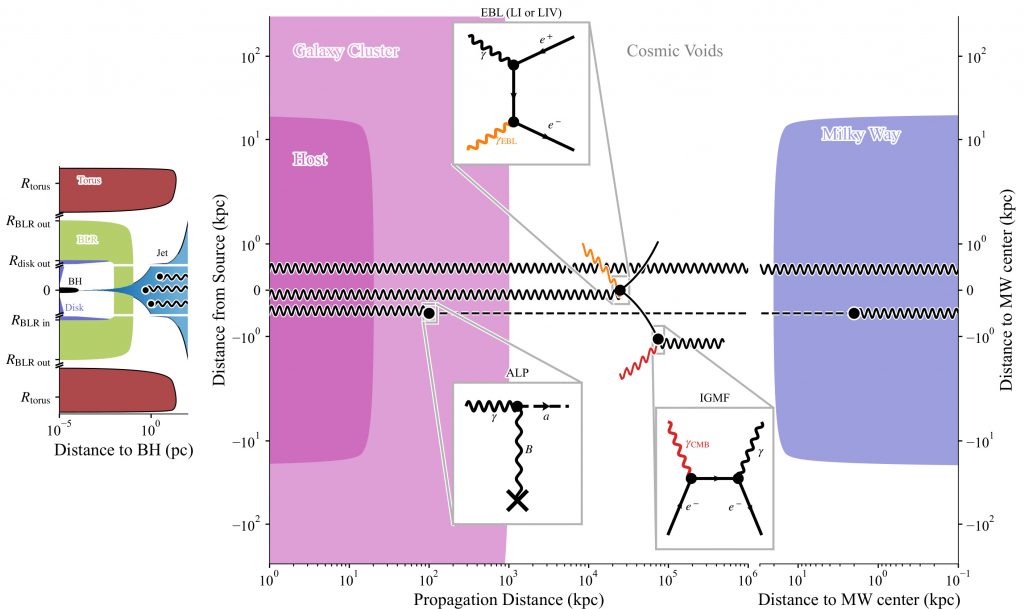
The journal Galaxies published on 22 February 2022 a review by Jonathan Biteau (IJCLab) and Manuel Meyer (Univ. of Hamburg) that describes the progress in constraining the propagation of TeV gamma-rays on cosmological scales. Interesting discoveries have already been made with data from HESS, MAGIC, VERITAS combined with Fermi-LAT, which bodes well for the future with CTA.
Abstract
The propagation of gamma-rays over cosmological distances is the subject of extensive theoretical and observational research at GeV and TeV energies. The mean free path of gamma-rays in the cosmic web is limited above 100 GeV due to the production of electrons and positrons on the cosmic optical and infrared backgrounds. Electrons and positrons cool in the intergalactic medium while gyrating in its magnetic fields, which could cause either its global heating or the production of lower-energy secondary gamma-rays. The energy distribution of gamma-rays surviving the cosmological journey carries observed absorption features that gauge the emissivity of baryonic matter over cosmic time, constrain the distance scale of ΛCDM cosmology, and limit the alterations of the interaction cross section. Competitive constraints are in particular placed on the cosmic star-formation history as well as on phenomena expected from quantum gravity and string theory, such as the coupling to hypothetical axion-like particles or the violation of Lorentz invariance. Recent theoretical and observational advances offer a glimpse of the multi-wavelength and multi-messenger path that the new generation of gamma-ray observatories is about to open.









